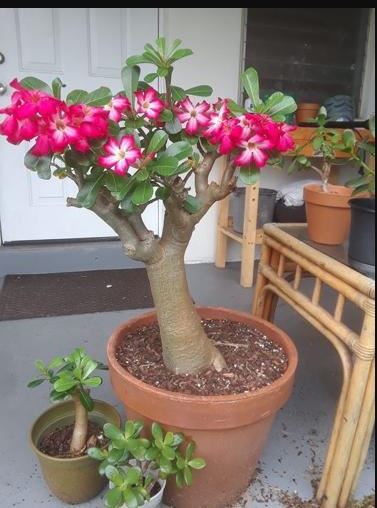Have you ever stared down a drooping plant, whispering apologies as you tossed it into the compost bin? Plant parenthood isn’t always easy. If you’re looking for a houseplant that can handle a bit of neglect (or even some serious forgetfulness), let me introduce you to the snake plant – the resilient green friend you didn’t know you needed.
Snake Plants: The Nearly Indestructible Houseplants for Everyone

The Unbeatable Snake Plant: Your Ultimate Guide to Low-Maintenance Greenery
The snake plant (also known as Sansevieria or, more colorfully, mother-in-law’s tongue) has earned a reputation as the “nearly indestructible” houseplant. Its striking upright leaves, tolerance for neglect, and air-purifying qualities make it a beloved choice for both novice plant enthusiasts and seasoned green thumbs. If you’re seeking a touch of greenery that’s easy to care for and adds a modern aesthetic to your space, the snake plant is an excellent option.
What Makes Snake Plants So Special?
- Effortless Care: The snake plant thrives on neglect. It prefers its soil to dry out completely between waterings, making it ideal for forgetful waterers or those with busy schedules.
- Air Purifying Power: Studies have shown that snake plants help to remove toxins like formaldehyde, benzene, and trichloroethylene from the air.
- Variety: Snake plants come in a variety of sizes, shapes, and colors, including dwarf varieties, tall, slender types, and even those with variegated leaves.
- Tolerates Low Light: While it prefers bright, indirect light, the snake plant can tolerate low-light conditions, making it versatile for different areas of your home or office.
- Drought Tolerant: This resilient plant is native to arid regions, so it stores water in its leaves and can survive extended periods without moisture.
Caring for Your Snake Plant
- Light: Bright, indirect light is ideal, but snake plants can adapt to low-light situations. Avoid direct sunlight, as it can scorch their leaves.
- Watering: Water your snake plant thoroughly, but infrequently. Allow the soil to dry out completely between waterings. Overwatering is the most common cause of problems for snake plants.
- Soil: Use a well-draining potting mix formulated for cacti and succulents.
- Fertilizer: Snake plants are light feeders. Fertilize sparingly during the growing season (spring and summer) with a balanced liquid fertilizer diluted to half strength.
- Repotting: Snake plants are slow-growing and prefer to be slightly rootbound. Repot only when the roots start to push the plant out of its pot, typically every 2-3 years.
Common Snake Plant Varieties
- Sansevieria trifasciata ‘Laurentii’: The classic snake plant with tall, upright leaves edged in yellow.
- Sansevieria cylindrica: Also known as the cylindrical snake plant, this variety has round, spear-like leaves.
- Sansevieria hahnii: A dwarf variety with short, wide leaves that form a rosette shape.
- Sansevieria ‘Moonshine’: This variety has silvery-green leaves and a compact growth habit.
Troubleshooting Snake Plant Problems
- Yellowing leaves: Overwatering is the most common cause. Ensure your plant’s soil dries out completely between waterings.
- Brown tips: This can be caused by dry air, underwatering, or exposure to cold drafts.
- Soft, mushy leaves: This indicates root rot, often caused by overwatering. Remove any affected leaves and repot the plant in fresh, dry soil.
Conclusion
The snake plant is the perfect choice if you’re looking for an easy-care houseplant that adds a touch of modern elegance to your home. Its hardiness, air-purifying qualities, and striking appearance make it a favorite among plant enthusiasts of all levels. With a little basic care, your snake plant will thrive for years to come, providing you with beautiful foliage and cleaner air.
Are you ready to welcome a snake plant into your home? Share your snake plant stories and photos with us! Have you had any successes or failures? What varieties have caught your eye? Let’s celebrate the remarkable resilience of these incredible plants together.
Read Also:- Thriving Desert Rose Indoors: Your Complete Care Guide
Snake Plant FAQ
Q: How often should I water my snake plant?
A: Water thoroughly when the soil is completely dry. This might be every 2-3 weeks during the warmer months and less often in winter. Overwatering is the most common cause of snake plant problems.
Q: Can snake plants tolerate low light?
A: Yes, they’re surprisingly adaptable to low-light conditions, although they prefer bright, indirect light for optimal growth.
Q: Why are the tips of my snake plant’s leaves turning brown?
A: Brown tips are often a sign of underwatering or exposure to dry air. Try increasing humidity or misting the leaves occasionally.
Q: How do I propagate my snake plant?
A: Snake plants are easy to propagate through division (separating pups from the main plant) or by rooting leaf cuttings in water or soil.
Q: Can I keep my snake plant outdoors?
A: Yes, during warmer months, snake plants can be moved outdoors to a spot with bright, indirect light. Just remember to bring them back inside before temperatures drop below 50°F (10°C).
Q: Are snake plants toxic to pets?
A: Yes, snake plants contain saponins, which can be mildly toxic to pets if ingested. Keep them out of reach of curious furry friends.
Read Also:- How to Propagate Kalanchoe with Homemade Fertilizer

